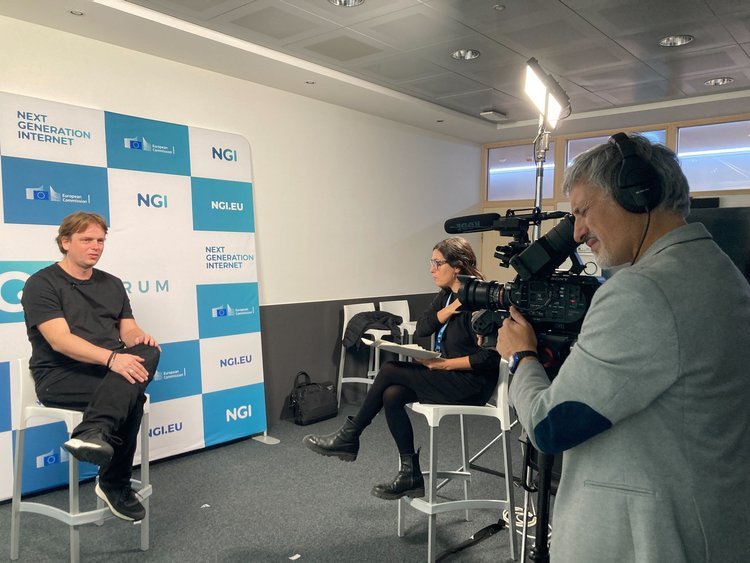Scientific research
Scientific research
Are citizen science projects scalable from their conception?
Are citizen science projects scalable from their conception?
30 de septiembre de 2020


By Giovanni Maccani, senior researcher. (Original publication in English)
The dizzying pace of technological advances, the paradigm of open innovation, and the ubiquity of high-speed connectivity greatly facilitate access to information, while also increasing opportunities for greater emancipation and empowerment. In parallel, these facts allow for more and more individuals to actively participate in scientific research and the shaping of public policies, opening up countless avenues that drive a paradigm shift in all disciplines, including the strengthening of citizen science.
While the interdisciplinary approach adopted thus far in citizen science has yielded significant results and findings, the current situation shows a wide range of projects whose success largely depends on the context and where the learnings from pilots do not extend beyond the specific areas of implementation. In summary, there is little evidence on how to encourage dissemination and scalability in citizen science. Furthermore, the citizen science community currently lacks a general agreement on what these terms mean, what they entail, and how they can be addressed.
To address these issues, we have developed a theoretical and empirical framework to unpack the meaning of scaling and disseminating in citizen science. Want to know more about it? Keep reading!
A case-based approach
Inspired by relevant academic debates developed across various disciplines, our theoretical framework functions as a magnifying glass that analyzes the phenomenon of scalability and proposes a systematic assembly of several theoretical models.
With the aim of validating and extending this hypothesis, we applied the framework as a fundamental basis to guide a rich and rigorous qualitative empirical analysis. To do this, we conducted the study of four interventions in citizen science, all diverse but successfully scaled. The data collected through several interviews allowed us to understand and collectively build knowledge about the scalability trajectory of these initiatives based on real experiences and initiatives that successfully tackled the challenges posed.
Discern the factors driving scalability
Throughout the development phase, we identified nine elements that could be understood as driving factors of scalability in the field of citizen science and grouped them into three main categories:
Elements related to the initial intervention to scale or disseminate (and the related items).
Elements that support the dissemination and expansion process.
Elements of the context identified as target.

Next, we validated and enriched the theoretical framework through qualitative study of four examples of projects in the field of citizen science where scalability and dissemination were successful: Making Sense Barcelona, FreshWaterWatch, Luftdaten & Sensor.Community, and OpenStreetMap .
As a result, we identified an emerging typology of four scenarios with scalability potential:
The scalability of communities through narratives.
Scalability through infrastructures and the approach of training trainers.
Scalability through virtuous cycles facilitated on the platform itself.
Scalability through network effects facilitated on the platform itself.
Scalable projects by design
The case studies proved the validity of our theoretical framework as well as the elements associated with it, thus the formula for unpacking scalability and its enabling factors in the field of citizen science has proven to be valuable. However, these cases also demonstrated how each of the identified elements can play different roles in promoting the expansion of citizen science interventions. These roles may vary depending on context, the nature of the interventions, and the stage of scalability (for example, from a temporal perspective) in which the specific initiative is situated.
This suggests that the theoretical framework can be seen as a valuable and scientifically grounded solution for understanding the complex and multifaceted phenomenon of scalability in citizen science. In other words: it provides a structured environment for designing new projects that are scalable by design; evaluating the potential for scalability of existing initiatives; and framing future research initiatives to further explore the process of scalability in the field of citizen science.
But not only that, none of the studied initiatives relied solely on one or a few elements to achieve their state of scalability; rather, their experiences show that, while some elements may seem more dominant than others, scalability is the result of a dynamic balance. At times, clear links emerged between the different domains, but these also led to trade-offs.
All these reflections and many more details are gathered in the book titled: Scaling Citizen Science: What Factors are Associated with Greater Reach and How to Leverage Them for Impact, published by the Joint Research Centre (JRC), the science and knowledge department of the European Commission.
By Giovanni Maccani, senior researcher. (Original publication in English)
The dizzying pace of technological advances, the paradigm of open innovation, and the ubiquity of high-speed connectivity greatly facilitate access to information, while also increasing opportunities for greater emancipation and empowerment. In parallel, these facts allow for more and more individuals to actively participate in scientific research and the shaping of public policies, opening up countless avenues that drive a paradigm shift in all disciplines, including the strengthening of citizen science.
While the interdisciplinary approach adopted thus far in citizen science has yielded significant results and findings, the current situation shows a wide range of projects whose success largely depends on the context and where the learnings from pilots do not extend beyond the specific areas of implementation. In summary, there is little evidence on how to encourage dissemination and scalability in citizen science. Furthermore, the citizen science community currently lacks a general agreement on what these terms mean, what they entail, and how they can be addressed.
To address these issues, we have developed a theoretical and empirical framework to unpack the meaning of scaling and disseminating in citizen science. Want to know more about it? Keep reading!
A case-based approach
Inspired by relevant academic debates developed across various disciplines, our theoretical framework functions as a magnifying glass that analyzes the phenomenon of scalability and proposes a systematic assembly of several theoretical models.
With the aim of validating and extending this hypothesis, we applied the framework as a fundamental basis to guide a rich and rigorous qualitative empirical analysis. To do this, we conducted the study of four interventions in citizen science, all diverse but successfully scaled. The data collected through several interviews allowed us to understand and collectively build knowledge about the scalability trajectory of these initiatives based on real experiences and initiatives that successfully tackled the challenges posed.
Discern the factors driving scalability
Throughout the development phase, we identified nine elements that could be understood as driving factors of scalability in the field of citizen science and grouped them into three main categories:
Elements related to the initial intervention to scale or disseminate (and the related items).
Elements that support the dissemination and expansion process.
Elements of the context identified as target.

Next, we validated and enriched the theoretical framework through qualitative study of four examples of projects in the field of citizen science where scalability and dissemination were successful: Making Sense Barcelona, FreshWaterWatch, Luftdaten & Sensor.Community, and OpenStreetMap .
As a result, we identified an emerging typology of four scenarios with scalability potential:
The scalability of communities through narratives.
Scalability through infrastructures and the approach of training trainers.
Scalability through virtuous cycles facilitated on the platform itself.
Scalability through network effects facilitated on the platform itself.
Scalable projects by design
The case studies proved the validity of our theoretical framework as well as the elements associated with it, thus the formula for unpacking scalability and its enabling factors in the field of citizen science has proven to be valuable. However, these cases also demonstrated how each of the identified elements can play different roles in promoting the expansion of citizen science interventions. These roles may vary depending on context, the nature of the interventions, and the stage of scalability (for example, from a temporal perspective) in which the specific initiative is situated.
This suggests that the theoretical framework can be seen as a valuable and scientifically grounded solution for understanding the complex and multifaceted phenomenon of scalability in citizen science. In other words: it provides a structured environment for designing new projects that are scalable by design; evaluating the potential for scalability of existing initiatives; and framing future research initiatives to further explore the process of scalability in the field of citizen science.
But not only that, none of the studied initiatives relied solely on one or a few elements to achieve their state of scalability; rather, their experiences show that, while some elements may seem more dominant than others, scalability is the result of a dynamic balance. At times, clear links emerged between the different domains, but these also led to trade-offs.
All these reflections and many more details are gathered in the book titled: Scaling Citizen Science: What Factors are Associated with Greater Reach and How to Leverage Them for Impact, published by the Joint Research Centre (JRC), the science and knowledge department of the European Commission.


